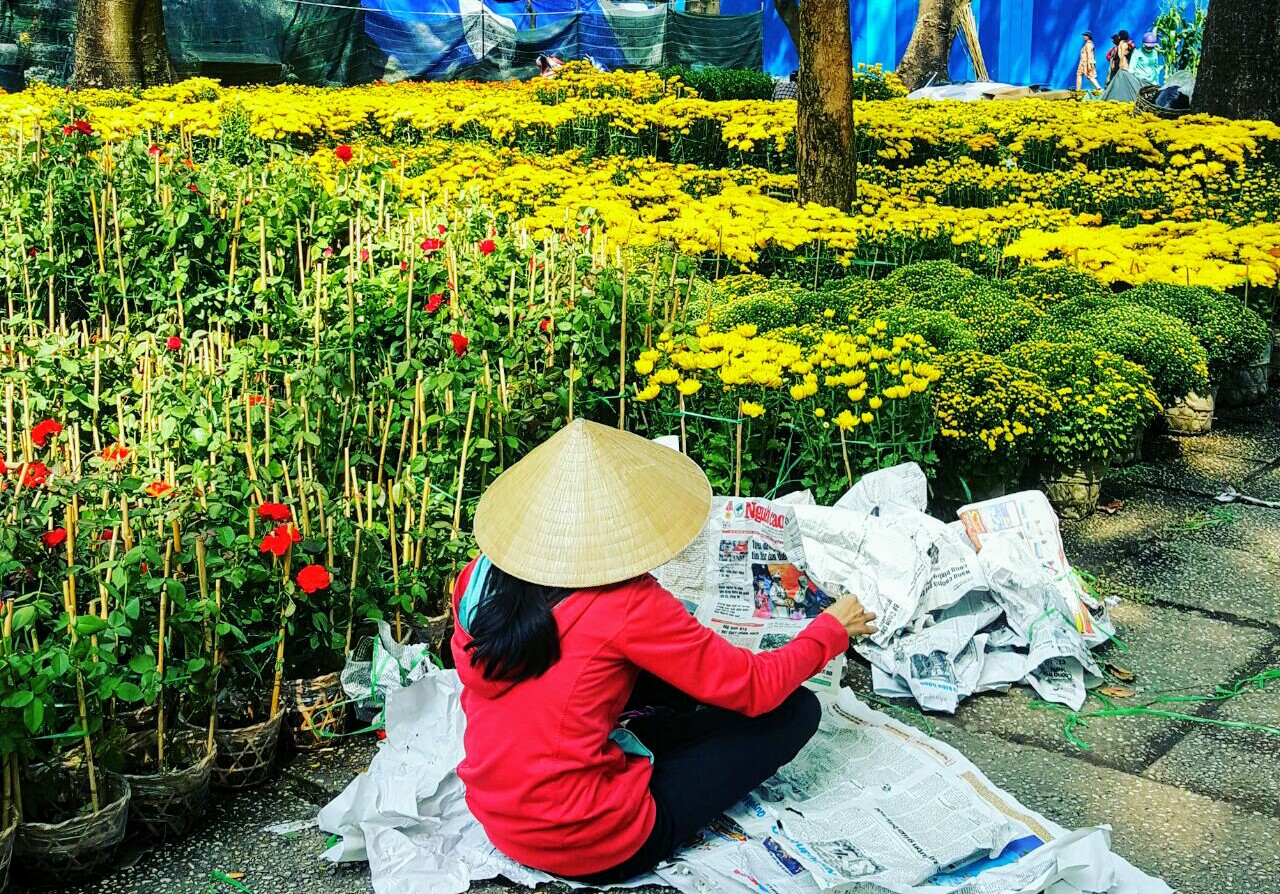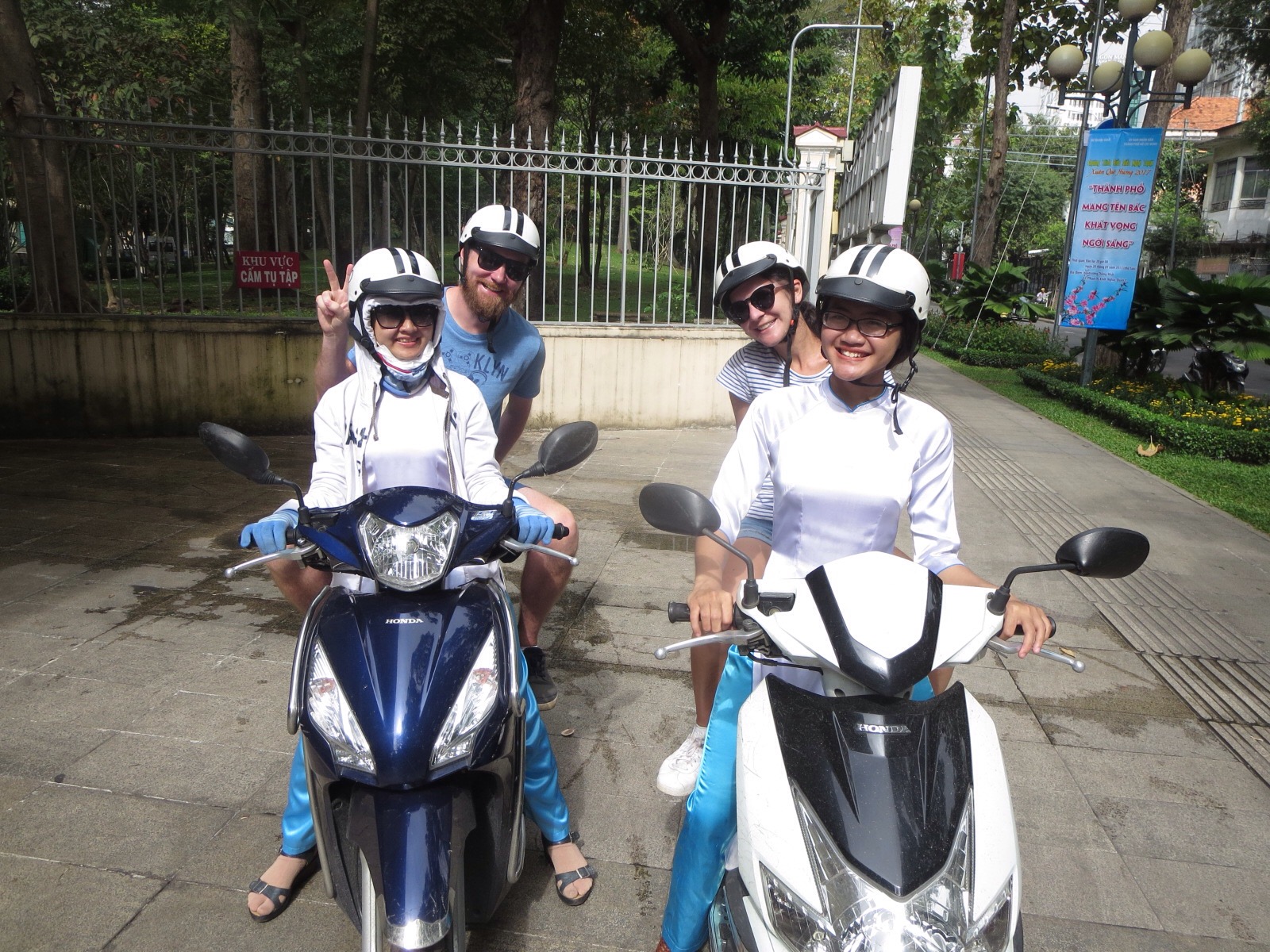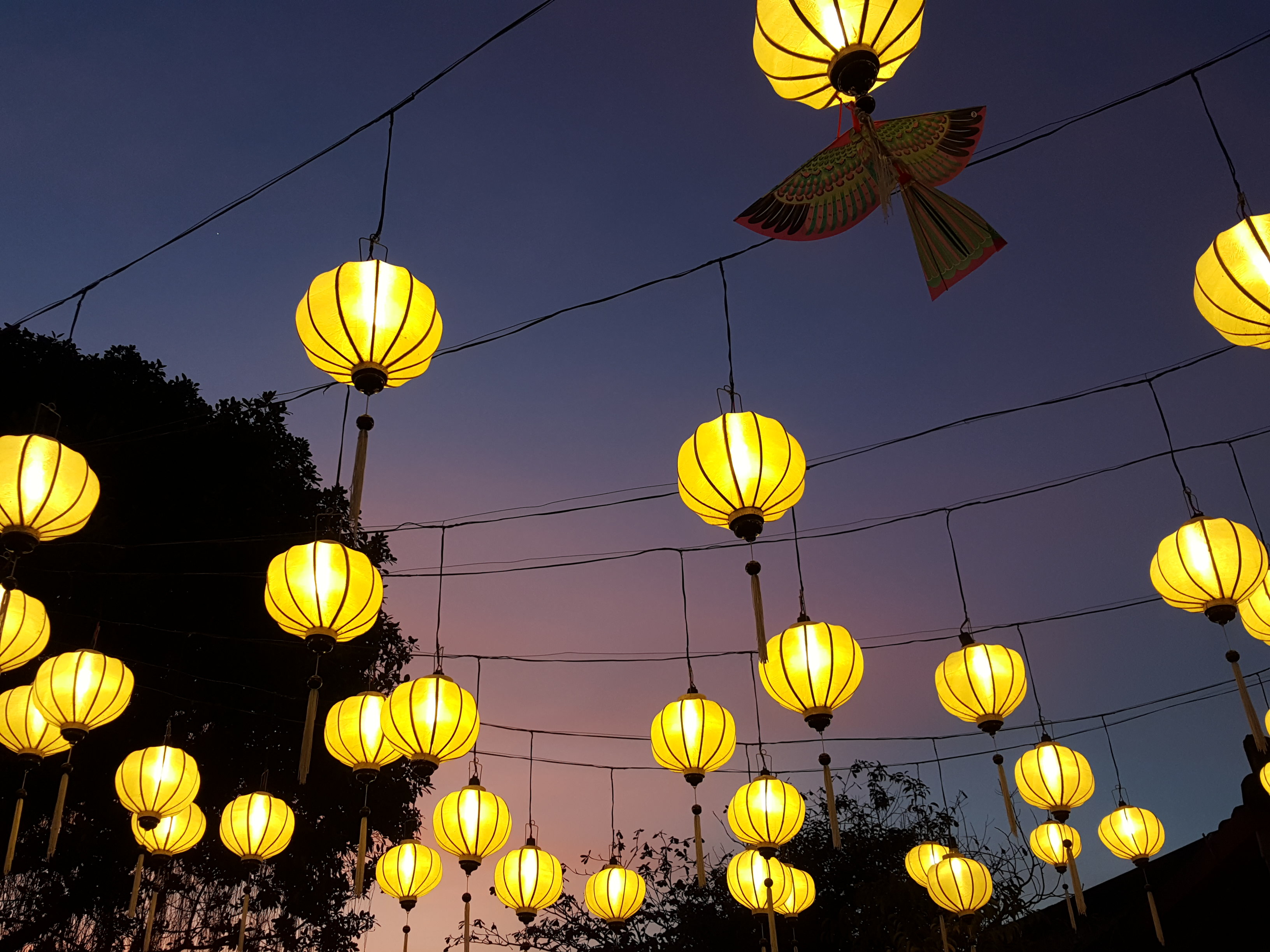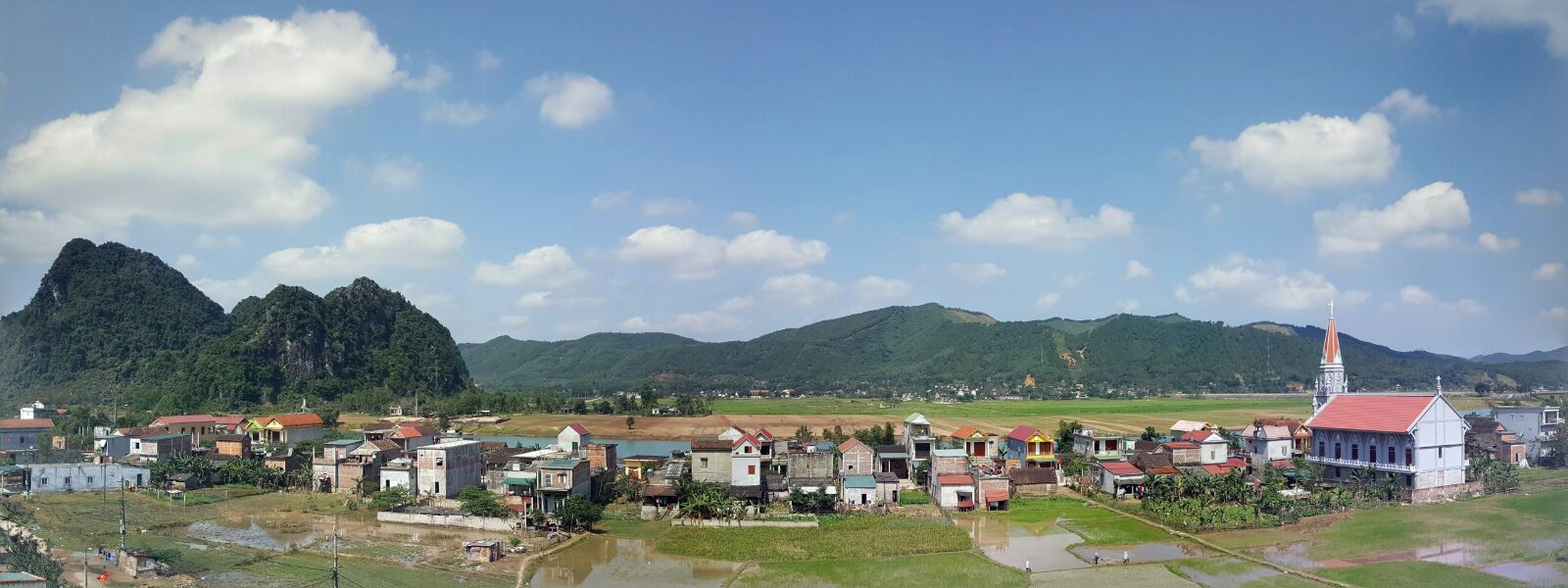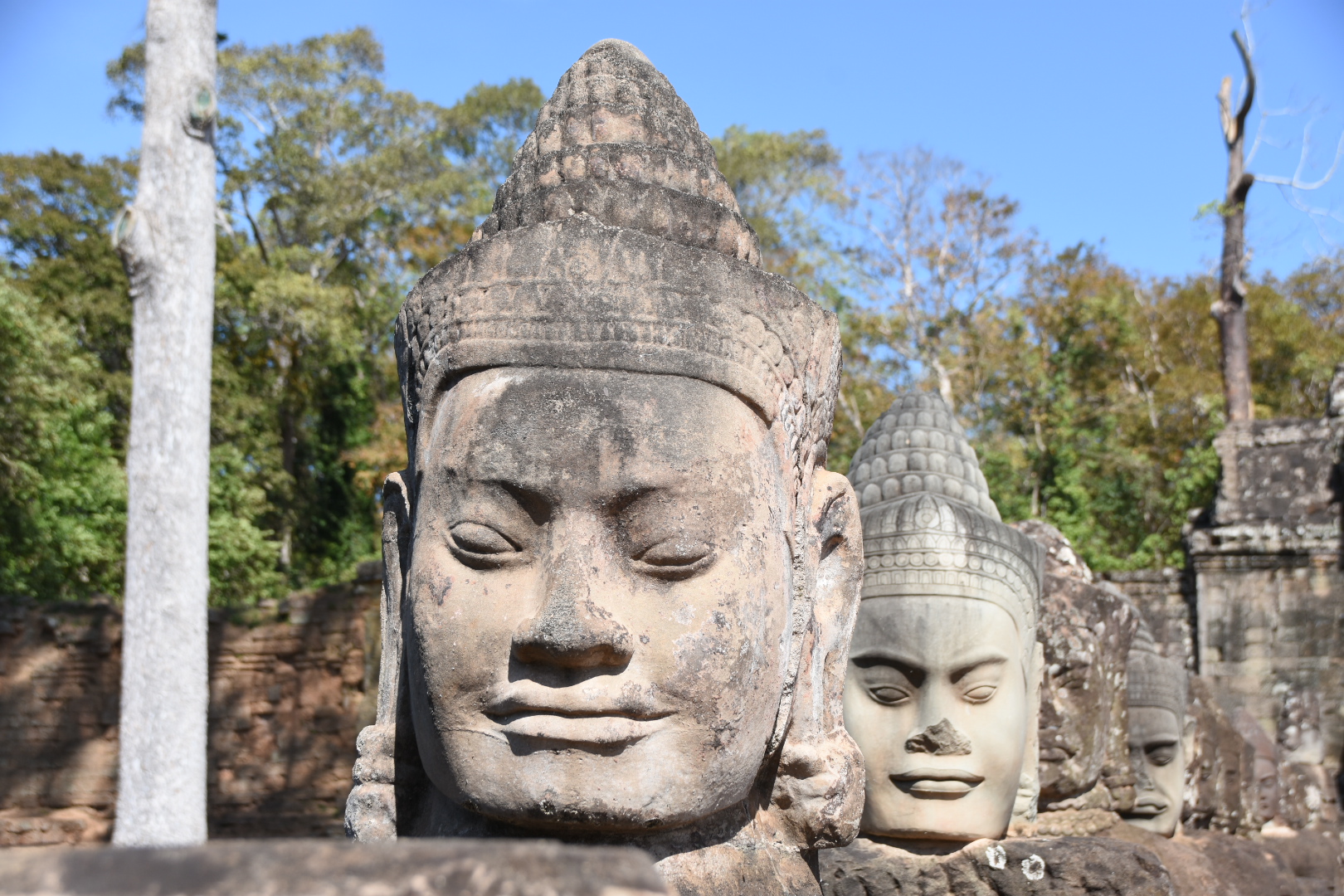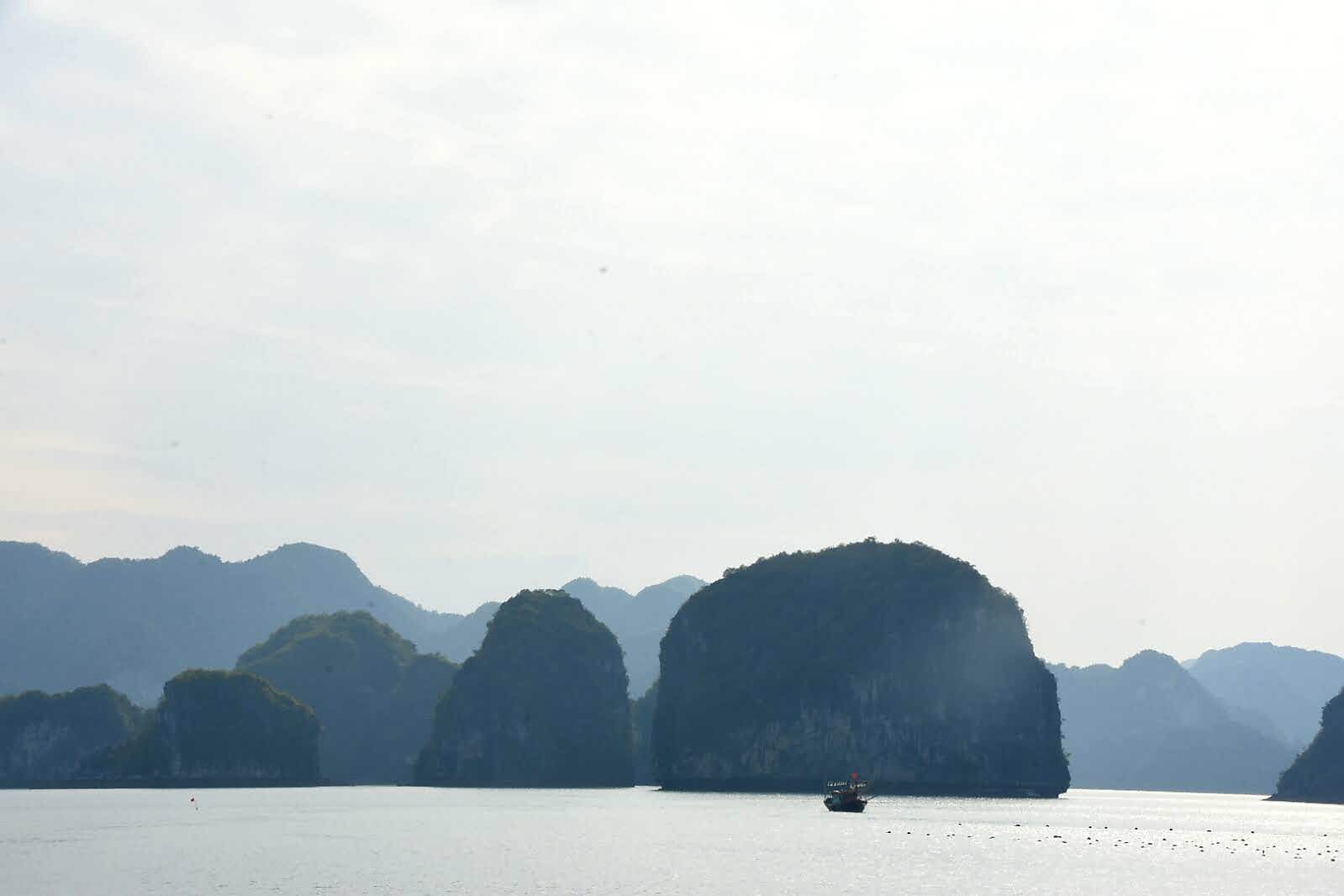Saigon, aka Ho Chi Minh City (HCMC), is a buzzing, chaotic and yet somewhat charming city in Southern Vietnam. Locals seem to refer more to it’s traditional name, Saigon, so we have done the same.
Whenever possible we like to start by getting a good overview of a new city, especially one as large and crazy as Saigon. So for our first day, we booked a scooter city sights tour with XO Tours. The night before, we met Turtle (aka Matt, Luke’s cousin who joined us in Phnom Penh and has lived in Saigon for a year) for a couple of craft beers at Pasteur Brewing Company. Tasty beers but at about $5 each they were many multiples above what we’ve been getting used to paying.

XO Tours came highly recommended by Jen and Luke (and of course the webosphere). We hopped on the back of scooters and had beautifully dressed young ladies skillfully navigate the chaos of Saigon’s roads, taking us to Saigon’s major sights (in District 1) and further afield to a local market and China Town. A great tour which was informative, entertaining and gave us an overview of the city. When I say chaos on the roads I do mean chaos! With hundreds of motorbikes everywhere you look (including on the footpath once the roads are full!), accidents seem destined to occur every moment. Somehow though, the traffic merges and flows seamlessly. Crossing the roads is like the 1980s computer game Frogger – take one step forward, a couple to the side, one backwards, then spot a gap and just go for it!


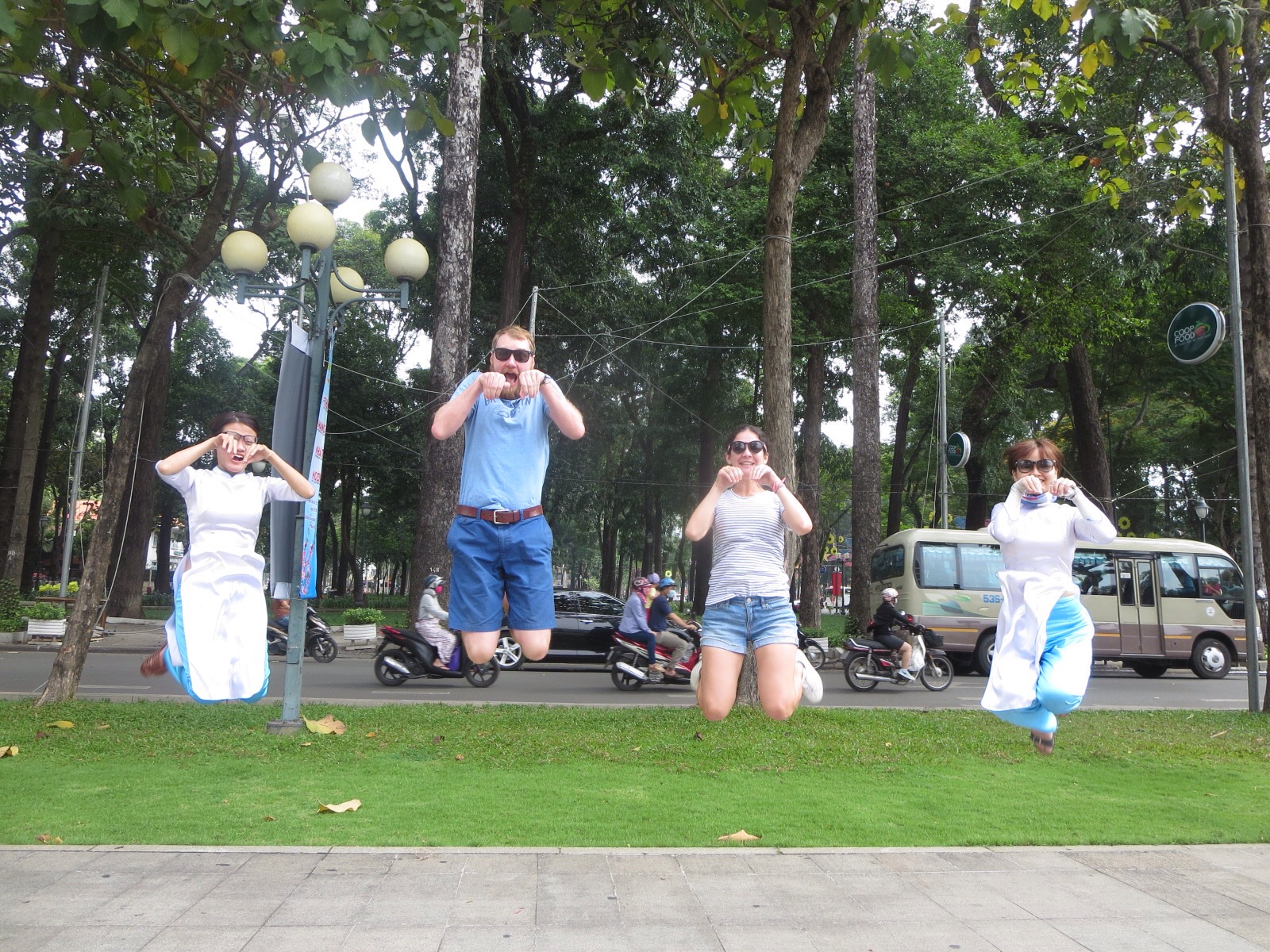



We try to avoid large organised group tours wherever possible but sometimes there is little alternative (or where there is, it is cost prohibitive). A visit to the Cu Chi Tunnels about 40km outside Saigon fit this category so we joined an 8am half day group tour that ended up being a dull day due to heavy traffic and a mandatory stop at a souvenir shop ‘on route’. A bit of a journey but Cu Chi is a must see when in Saigon. The tour takes you to the 250kms of complex and architecturally fascinating tunnels and chambers that were used as a base of operations and a place to hide and live by the Viet Cong during the American War (aka in Western countries as the Vietnam War). Crawling through these dark, low (the highest tunnel was 1.3m) and exceptionally narrow tunnels it is hard to imagine how people lived in these for seven years, only emerging out of the small holes to fight their enemy. The tunnels were topped with clay which, when set alight by the opposing forces, reinforced the tunnel and made it stronger. The tour includes a decent sized dose of propaganda including an old and dated documentary that seems to be mandated to tour groups and which was cringeworthy at best. Our tour guide was an entertaining and enthusiastic South Vietnamese war veteran who was able to provide some counter balance having fought on the side of the Americans and their allies.

We had planned to visit the War Museum after the tunnels but had to move this to the following morning as we arrived back after closing time. As with our visits to S21 and the Killing Fields in Cambodia this museum hit hard. The shocking devastation caused by the use of Agent Orange on millions of people (very sadly its use continues to have impact even four generations later!) is deeply saddening and infuriating. The lack of consequences for those who ordered, condoned the use of, or produced these chemicals is disgraceful.

With the major sights completed we had plenty of time for (what anyone who has read this blog before knows) our favourite way to soak up a new city – eating and drinking! Saigon is absolutely packed with street food and to us felt like a big open air restaurant. The formula for street food is simple: set up some plastic tables and chairs on the side of the road, select one or two dishes that you will do very well and serve them for about $2 each, cook from a simple kitchen / stall and pack in the locals. Us scared tourists have to decipher (with the help of Google mostly) what each dish is – almost always bun something or banh something. The first time trying street food was a little scary but we quickly discovered that the food on the street (at good, busy and clean establishments) is probably fresher and better quality than what is hidden out the back of restaurants. Once we started we couldn’t stop and we ate mostly street food during our time in Saigon. Our favourites included:



I’d been craving a good Banh Mi since we arrived in Vietnam. Our first was good but a little too traditional for Jen (many mystery meats!). We will continue to search for a great one to recommend.

It can be hard to know where to start with street food, we used and recommend checking out Vietnamcoracle.com who provide a great overview of the best Street food areas in Saigon.
We opened up the budget a little with cocktails at the rooftop Chill Skybar which offers great views and half price happy hour 5:30pm til 8pm. After this, however, they will set you back $10+ per drink (London prices!). We also had a nice (expensive!) cocktail at First Bar – a Japanese Whiskey place.


The best meal of the stay was on our last night at a restaurant which Turtle took us to, called The Fish Sauce. Access is via a lift in an office building that looked like a bank (almost no signs to the restaurant apart from in the lift). We shared a good selection of starters and mains, the friendly owner offered us complimentary tea and dessert and the total bill came to less than $10pp. Top quality food at great prices – a hidden gem.

In preparation for Tet (the Vietnamese New Year), Saigon was packed with flower markets and stalls. A lot of young women and families with children dress up in traditional clothing and have their photos taken around the city. This all provided a beautiful and colorful side to this busy city.


Saigon to Da Lat
After leaving Saigon our next stop is Da Lat, in the central highlands. We booked a day time bus with Phuong Trang (the company most highly recommended) for the six hour (turned out to be 10 hours from pick up in HCMC to drop off at our hotel in Da Lat), 300km journey. The trip can be done much quicker (and still reasonably cheapily) by air but the bus provided a bit more adventure. All buses with this company on this route operate as sleeper buses. A single decker bus with two levels of bunk beds, three beds per row about 10 rows long. I can only imagine this is reasonably comfortable for a shorter person but required some creative positions for 6ft 2 Daz. Not the most painful trip though and I’d probably do it by bus again.


